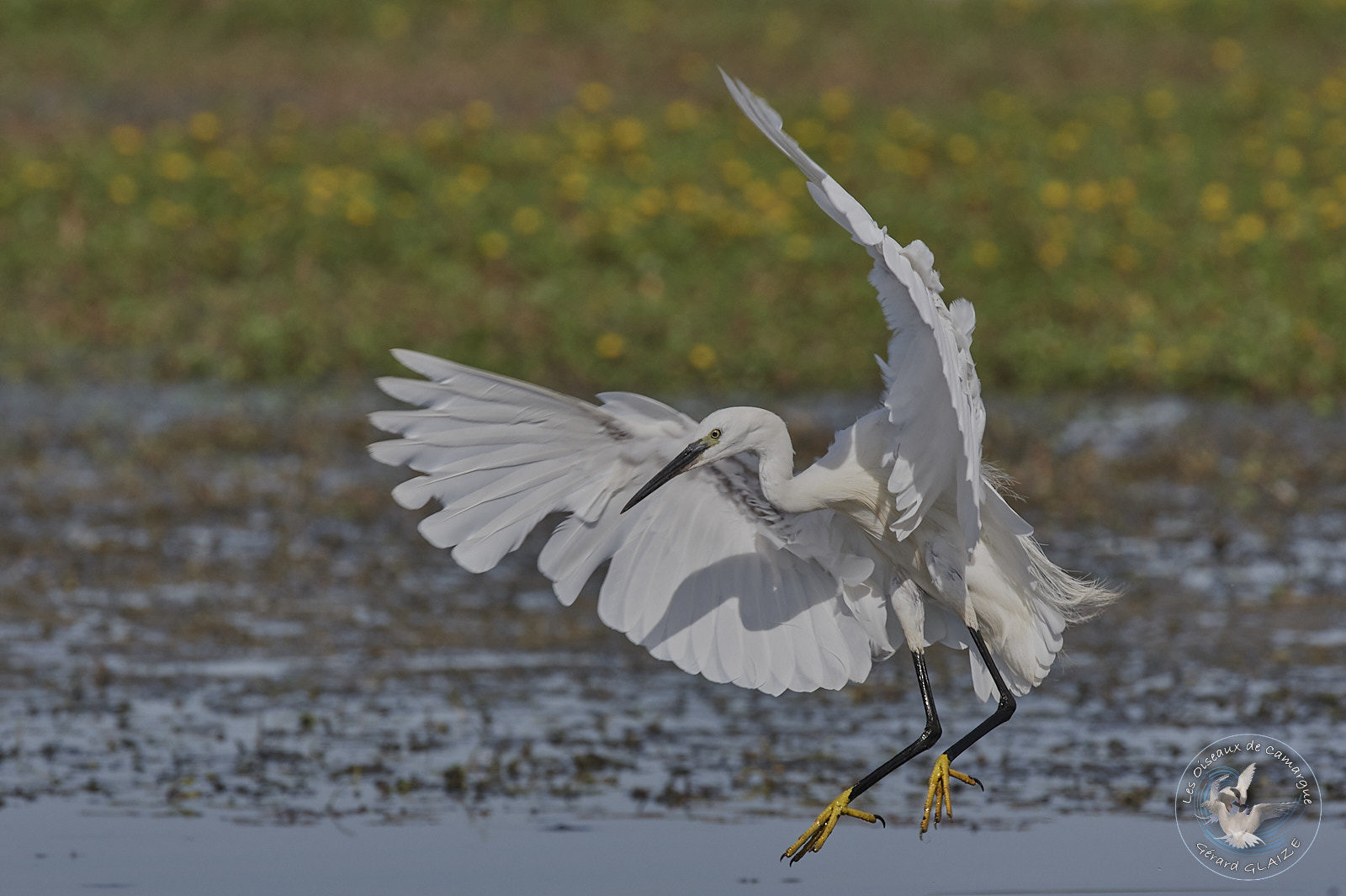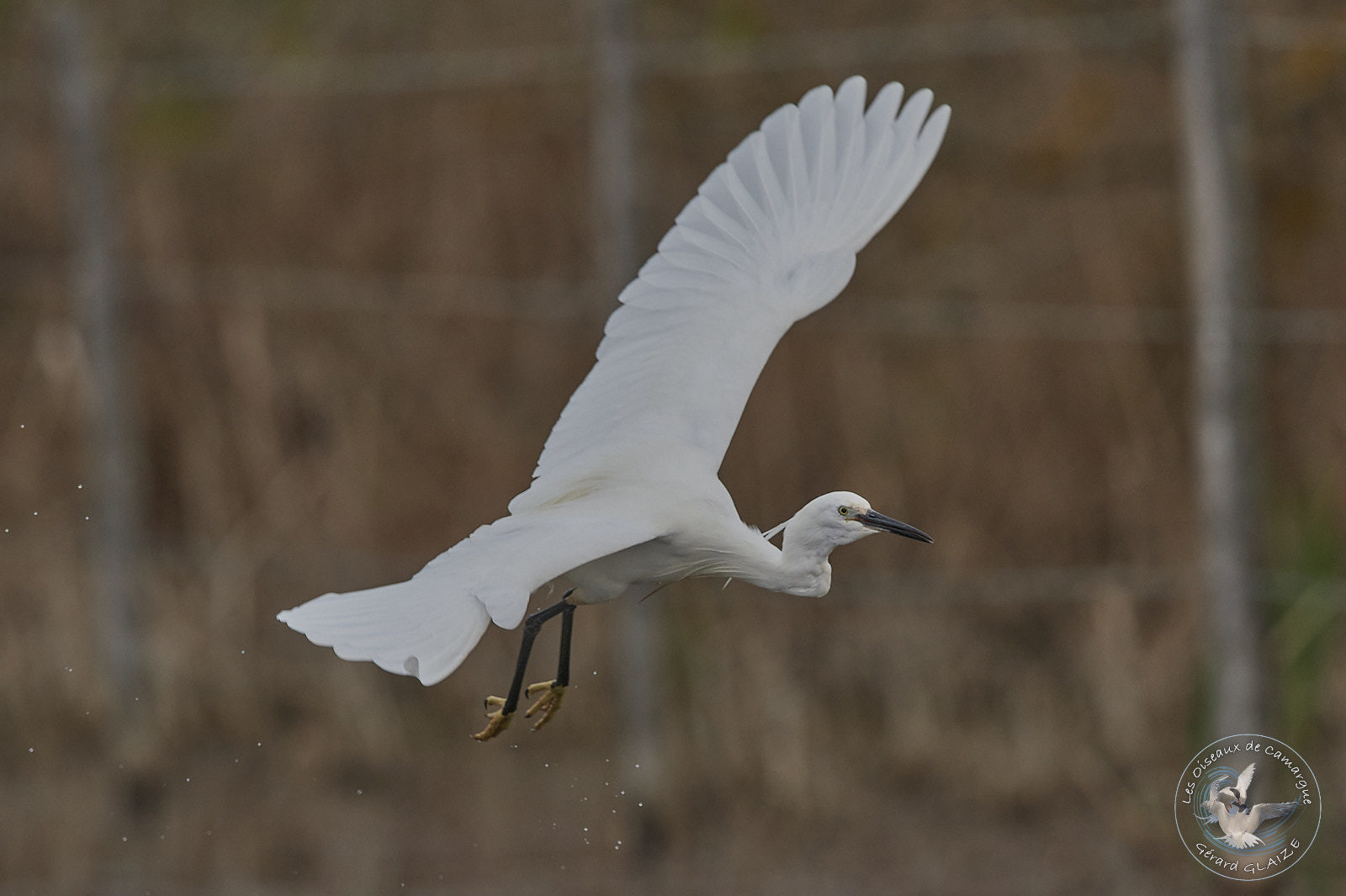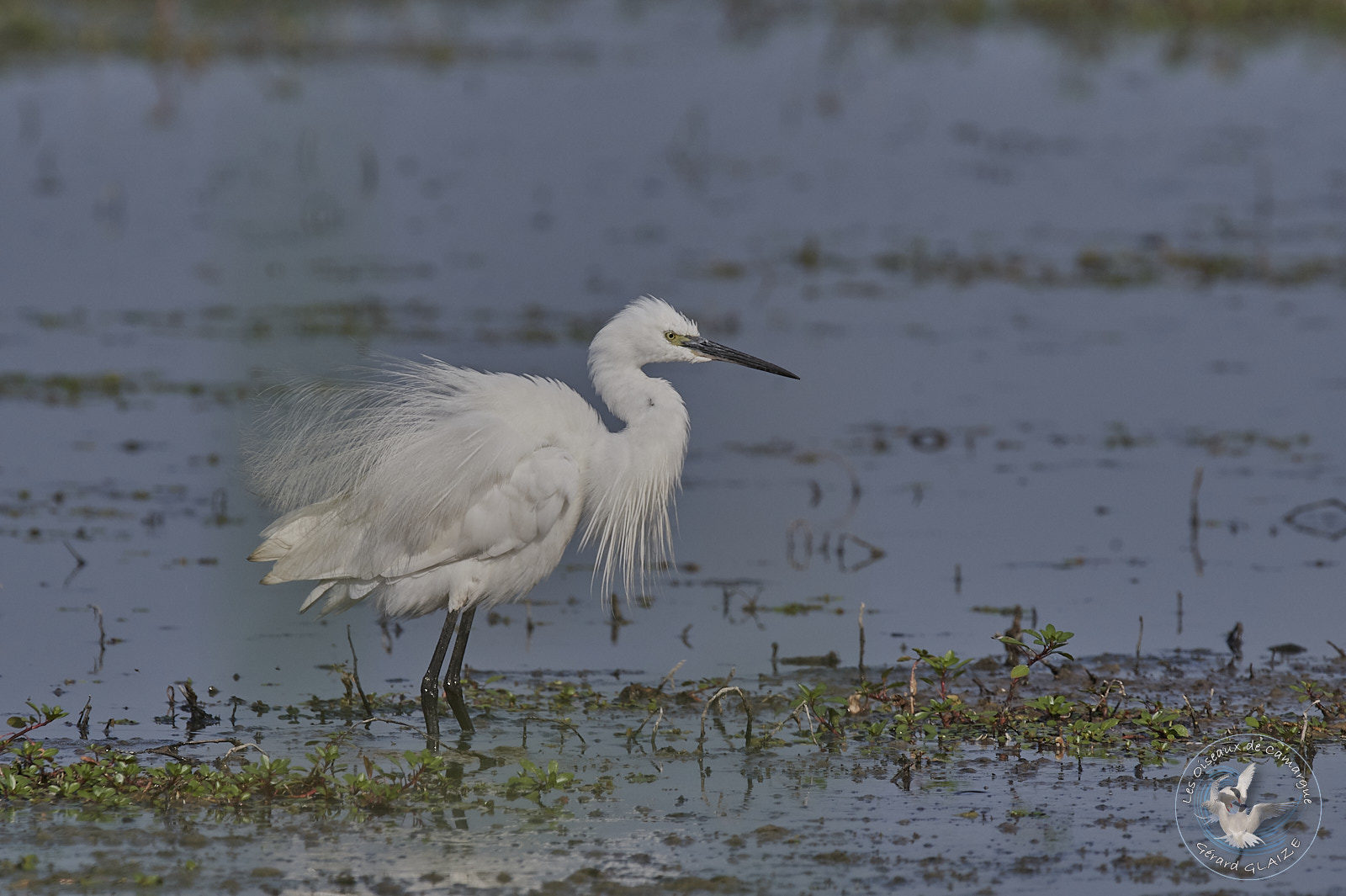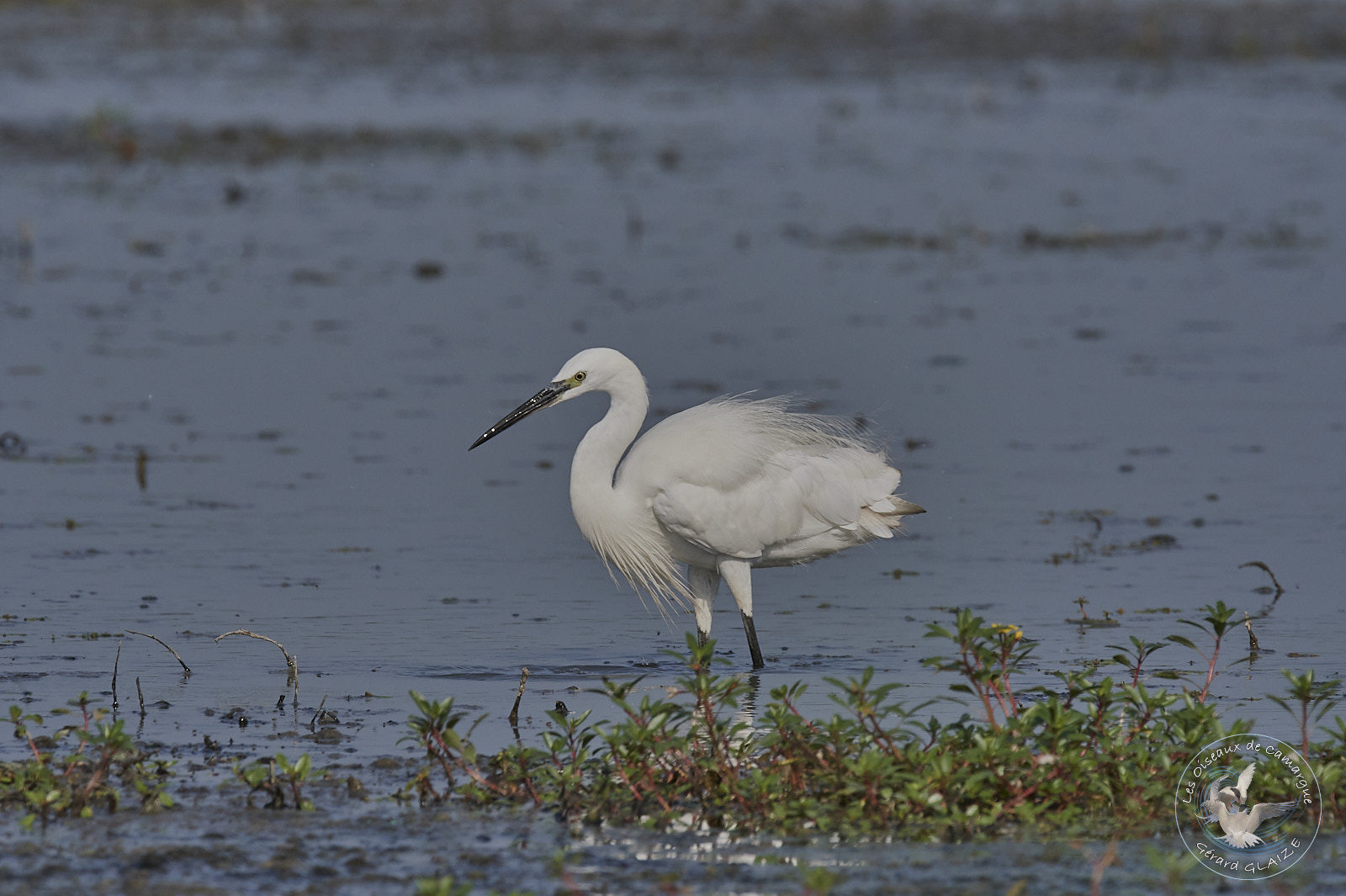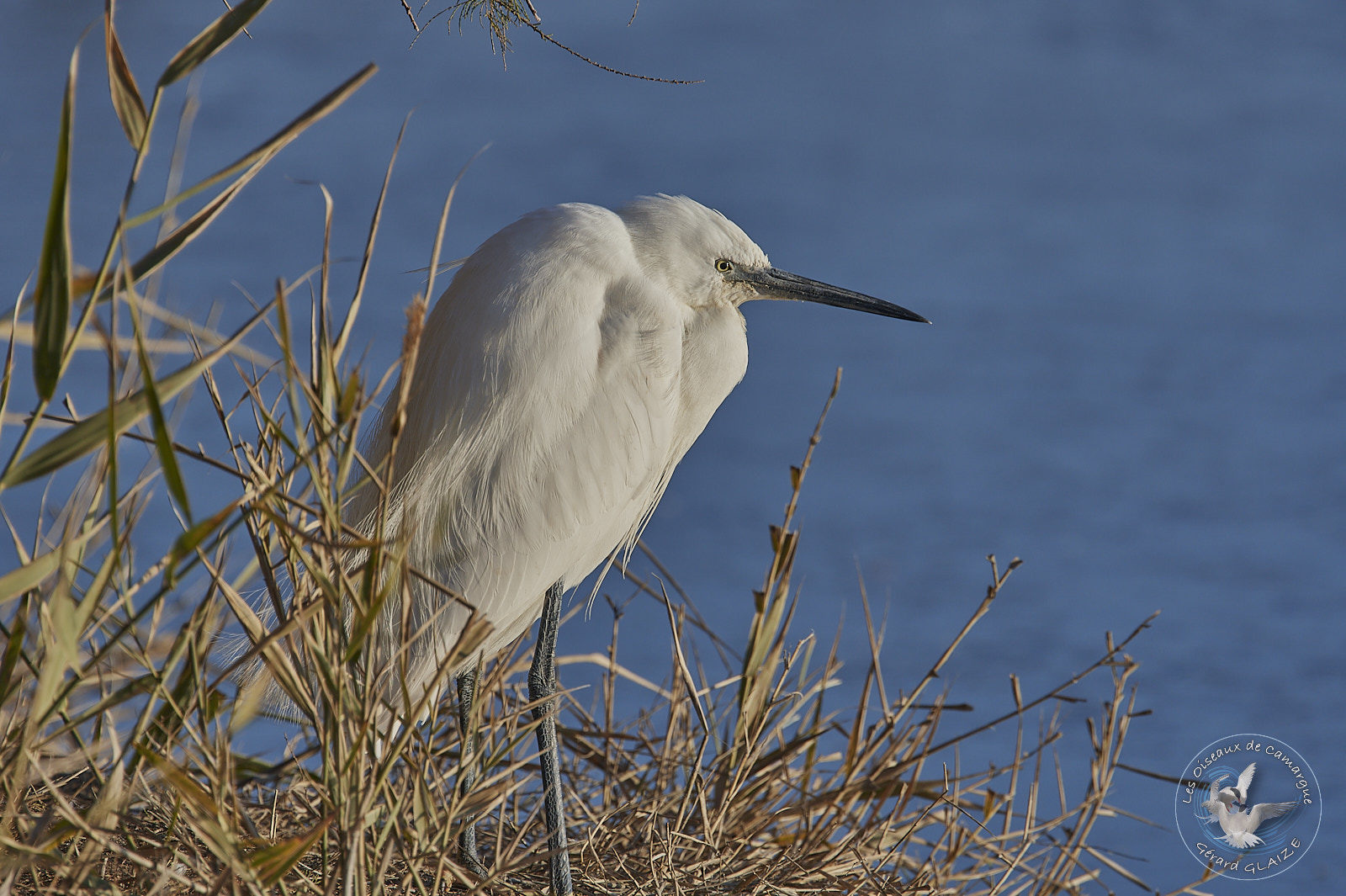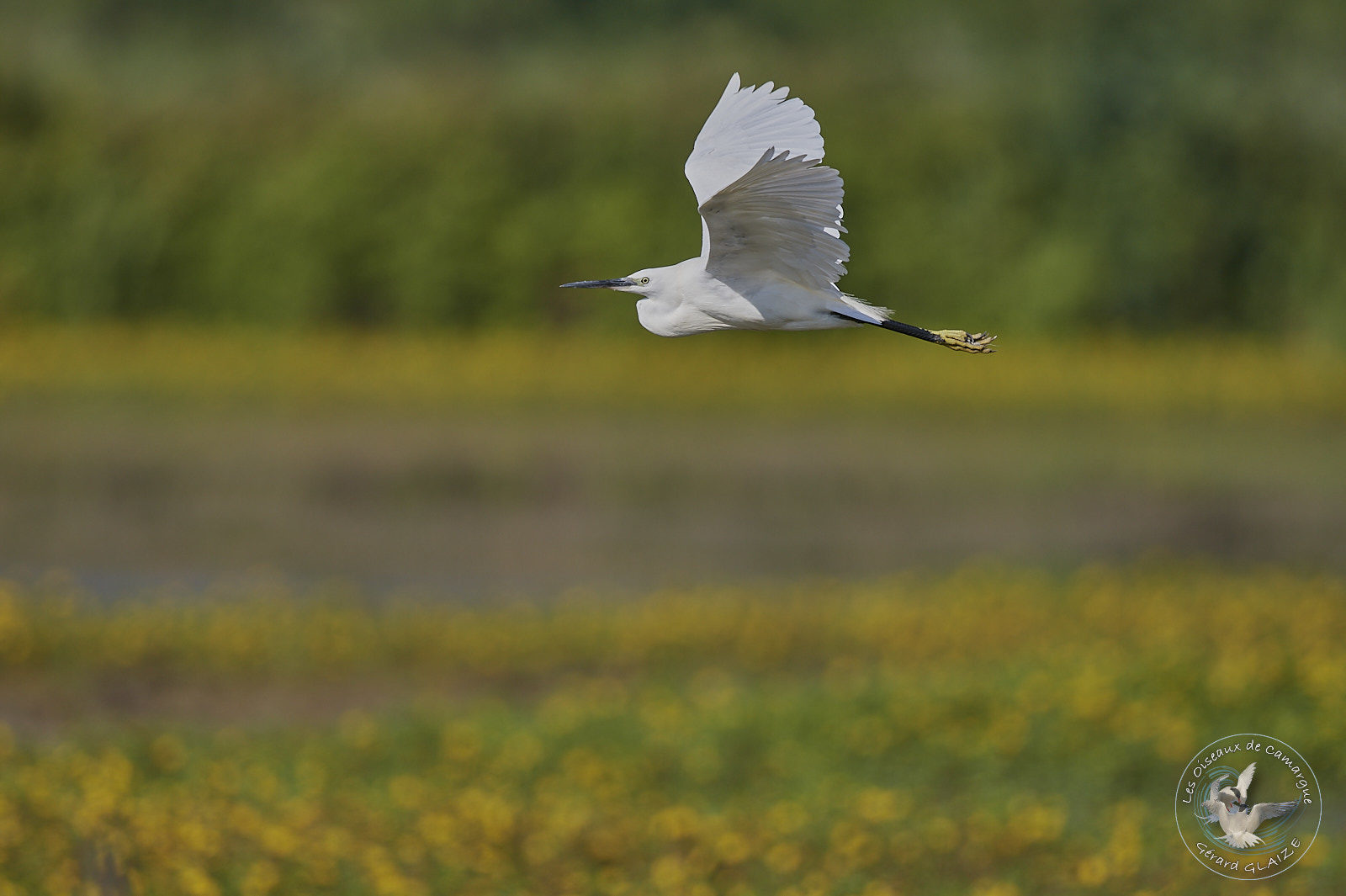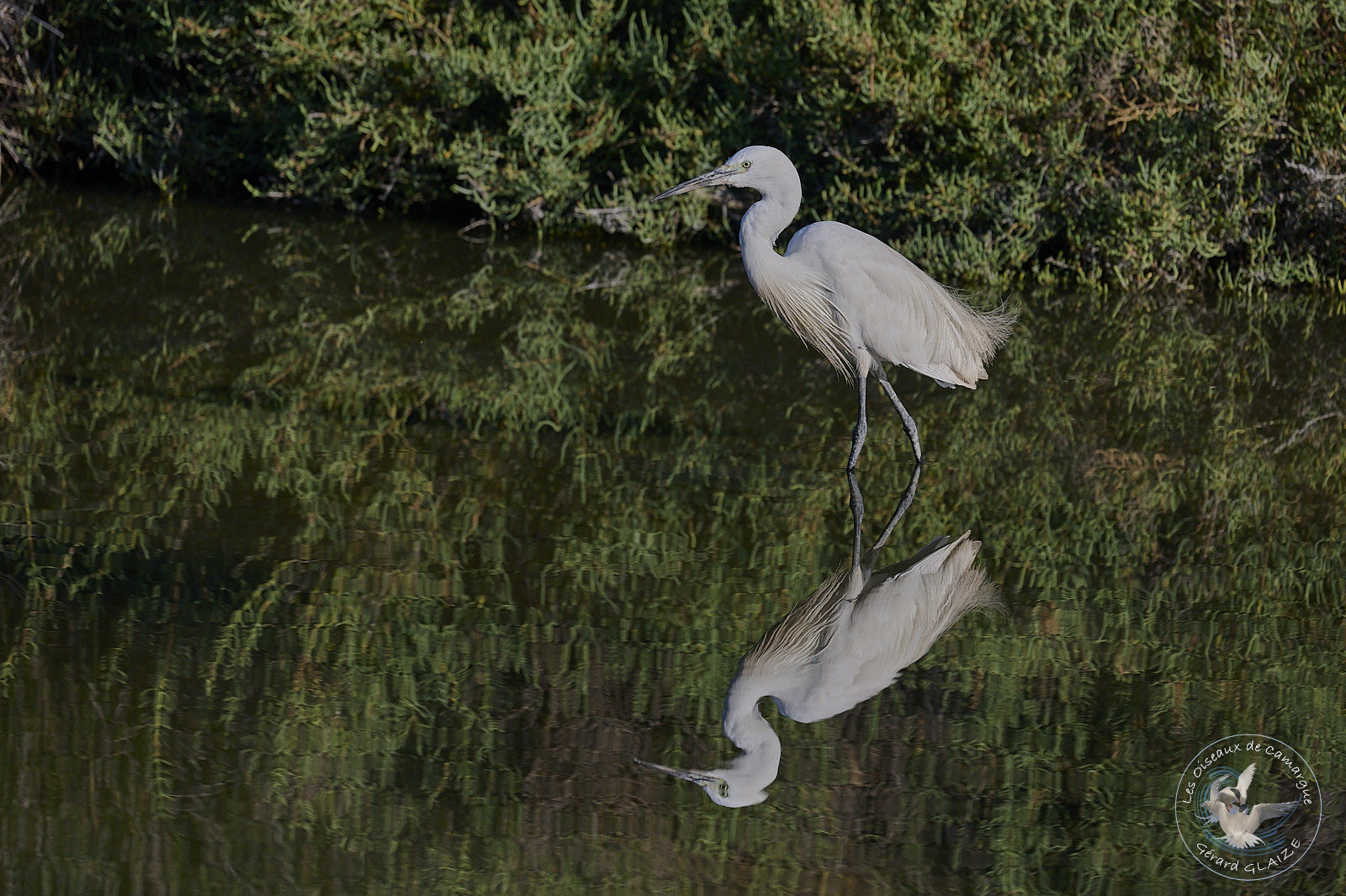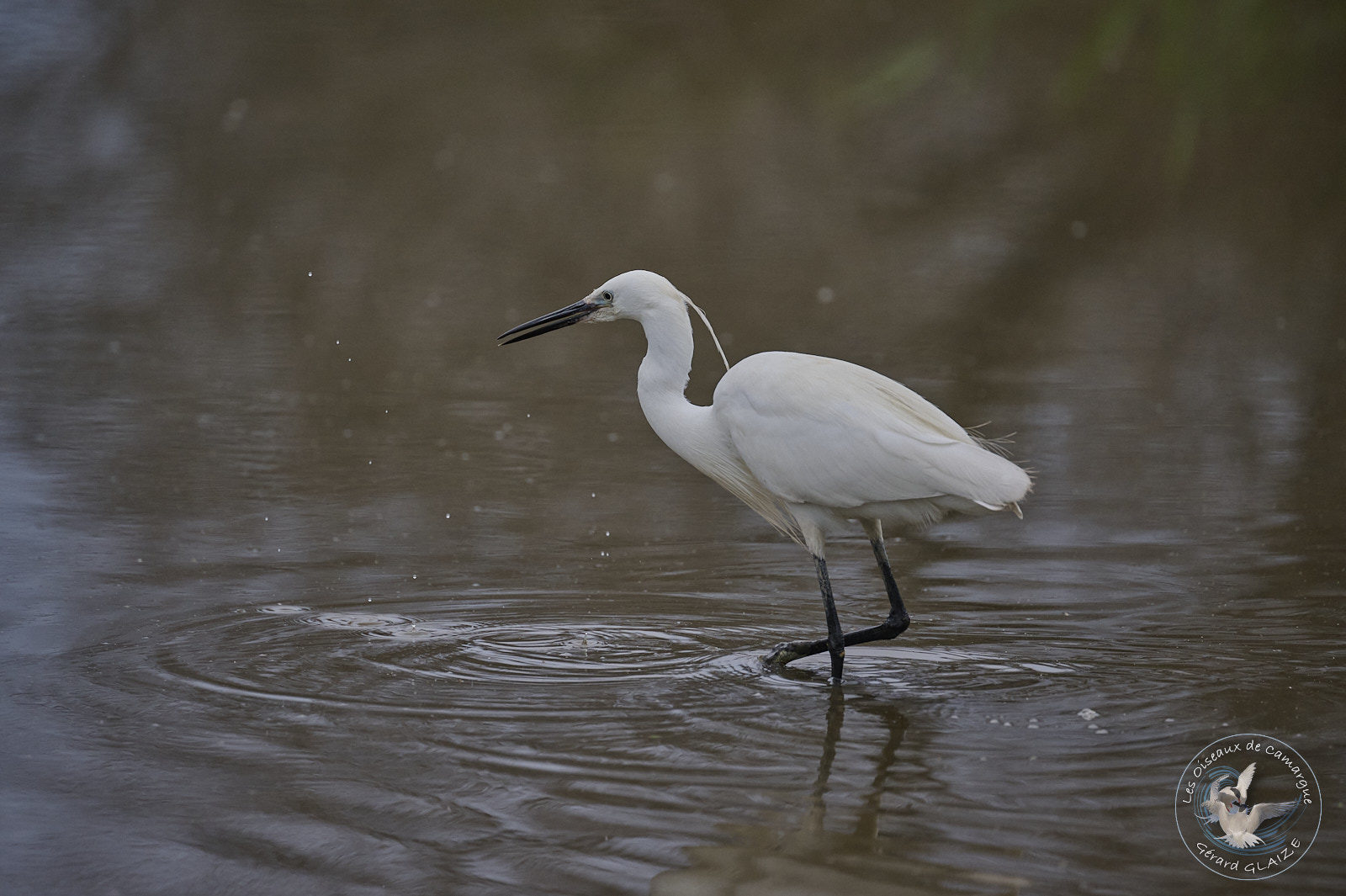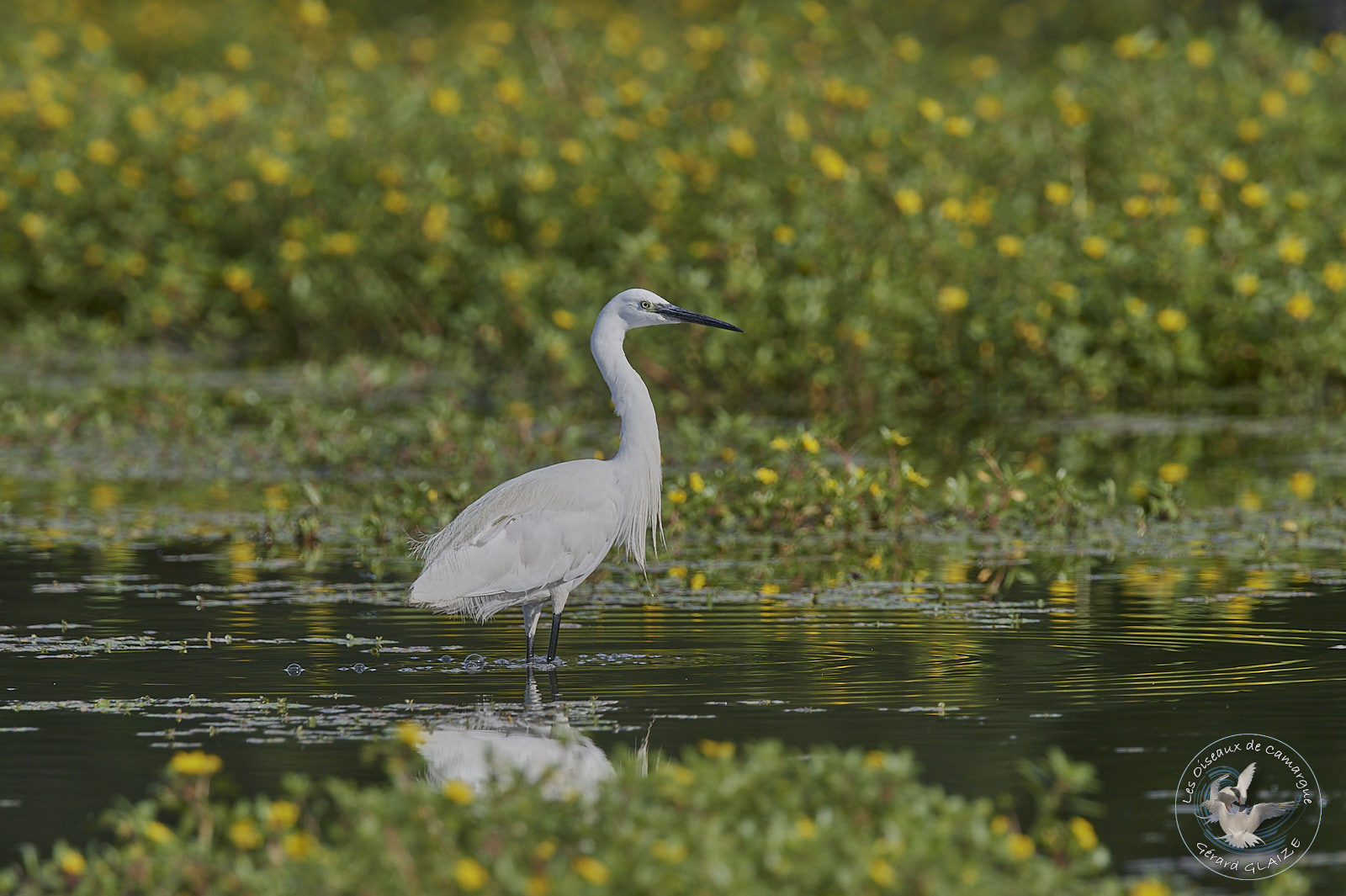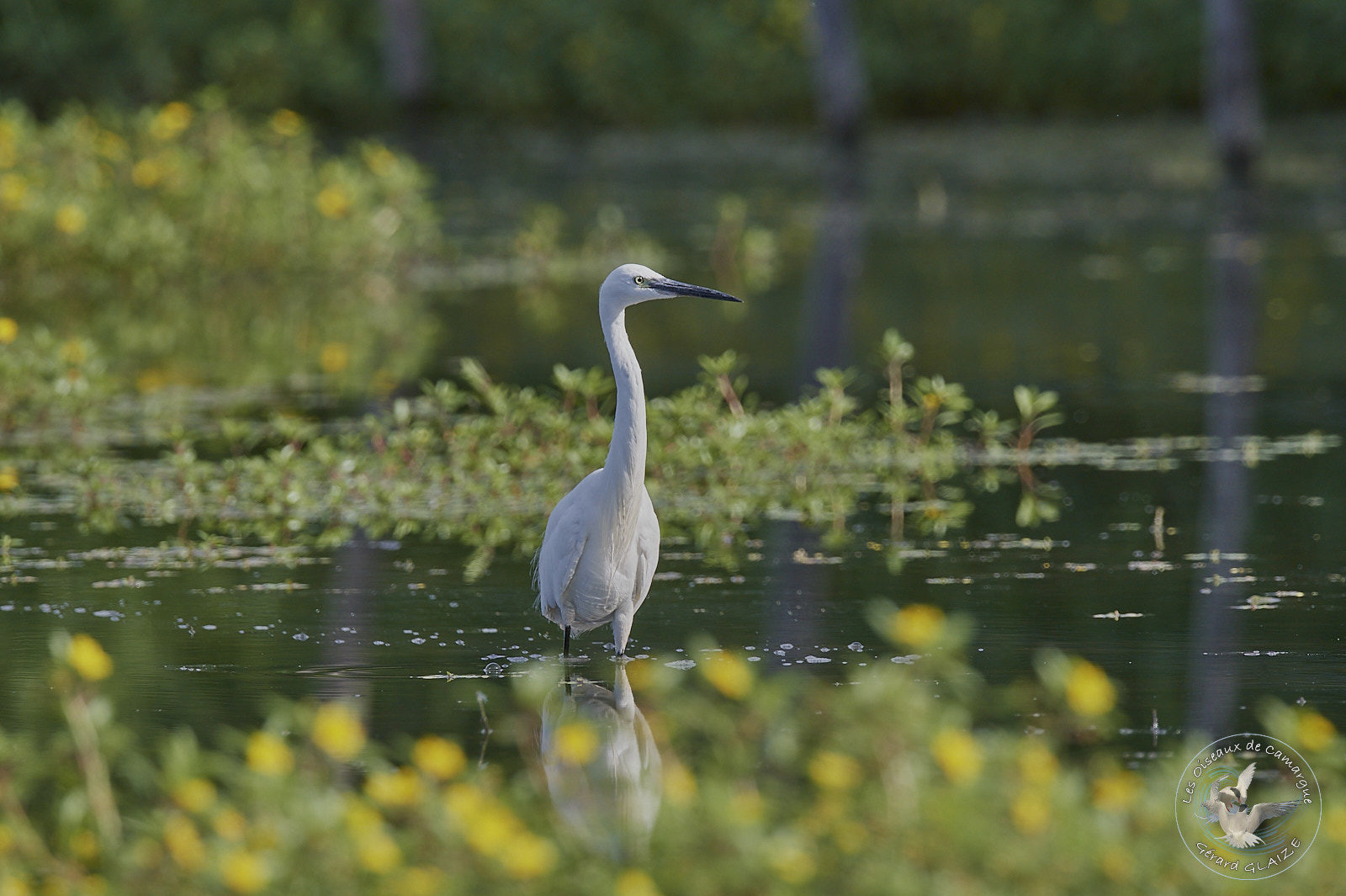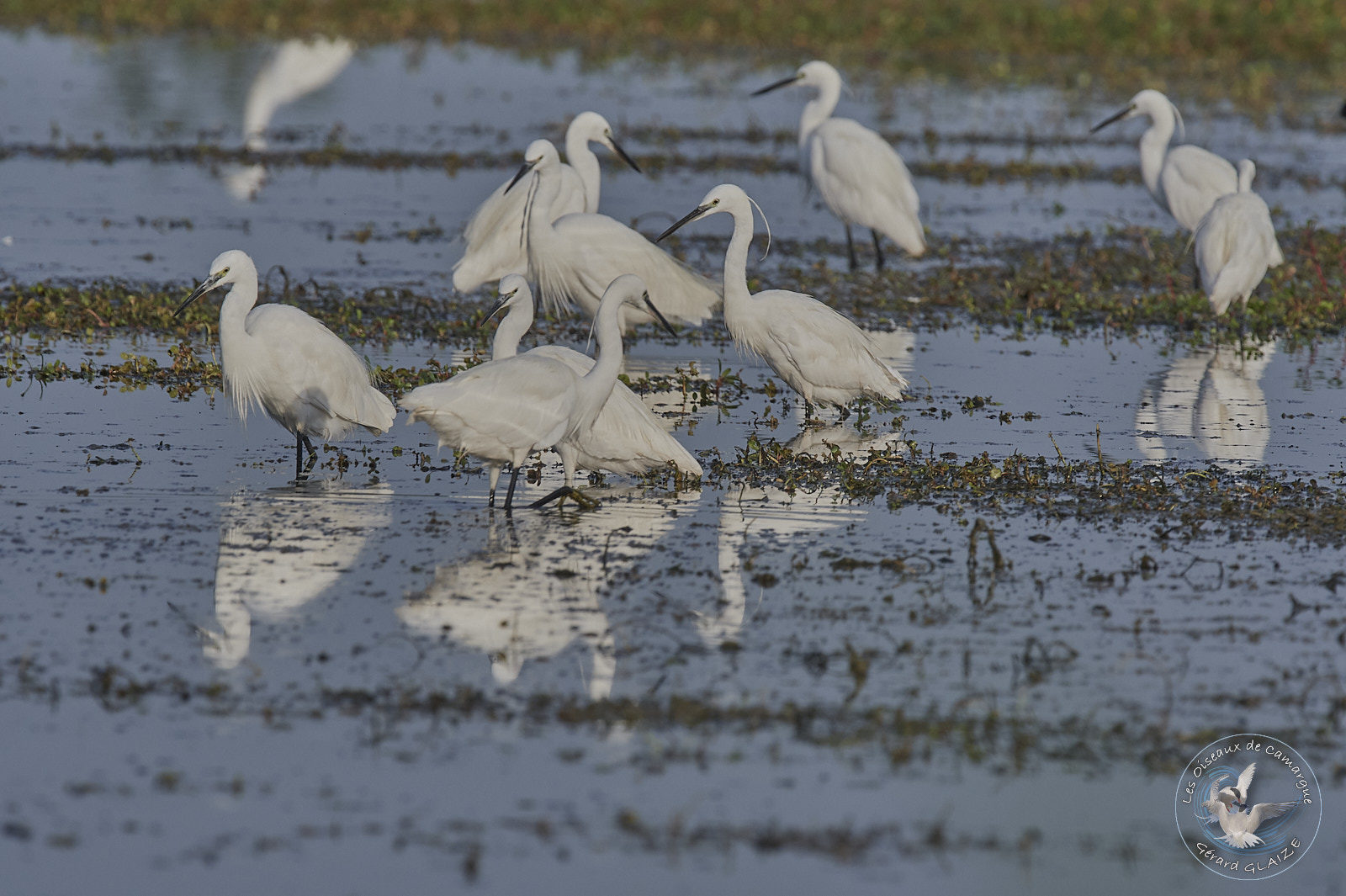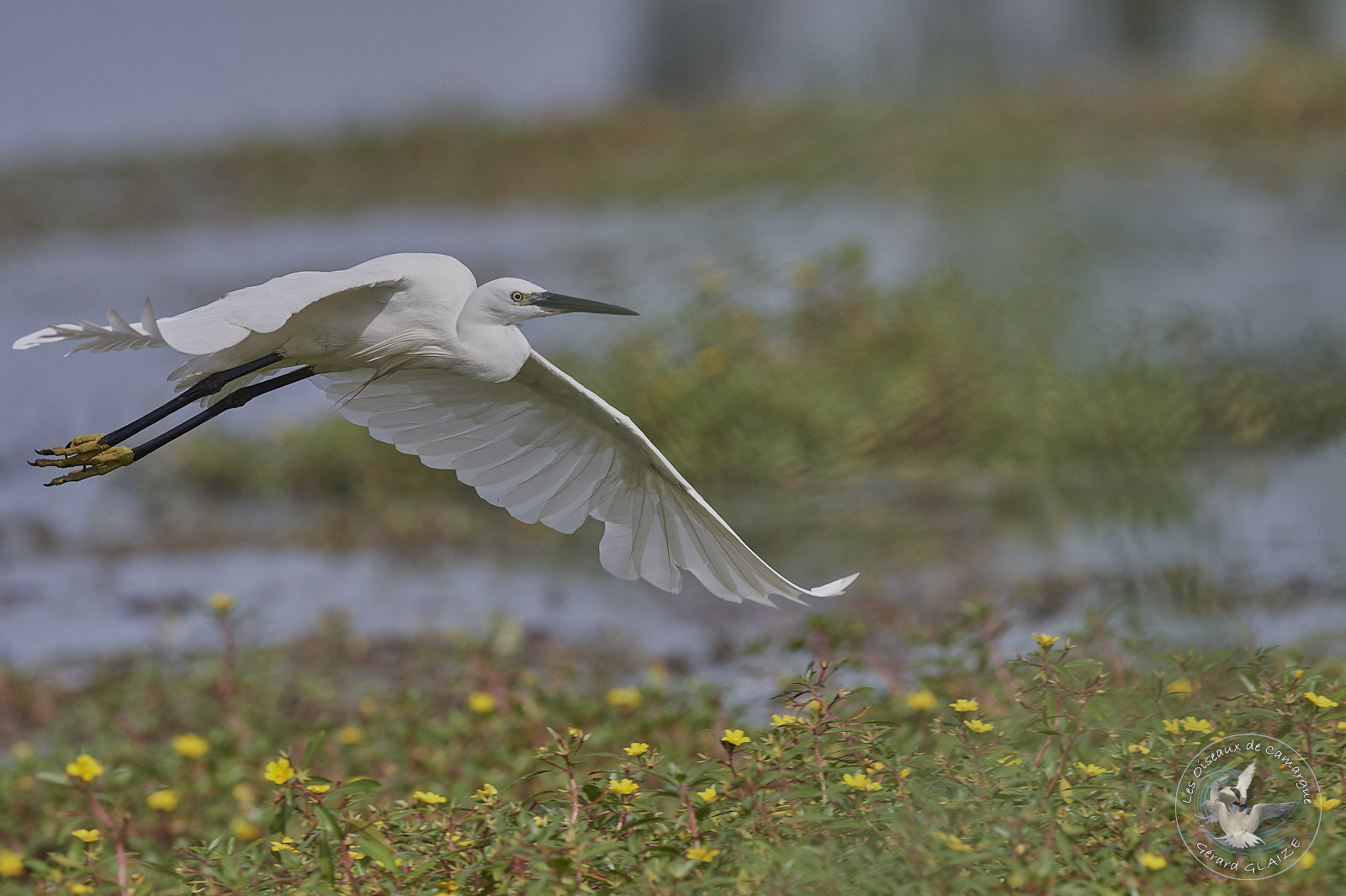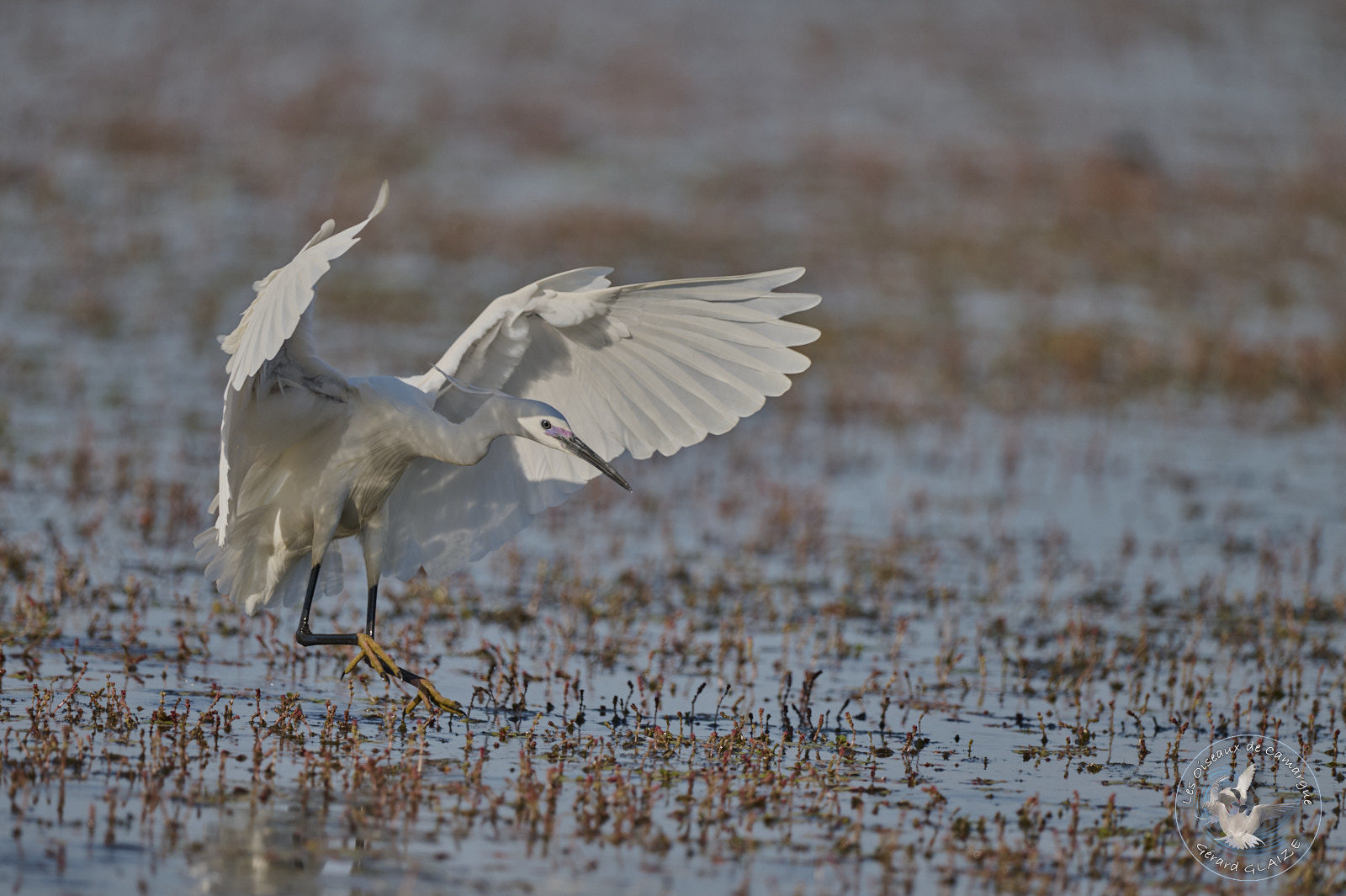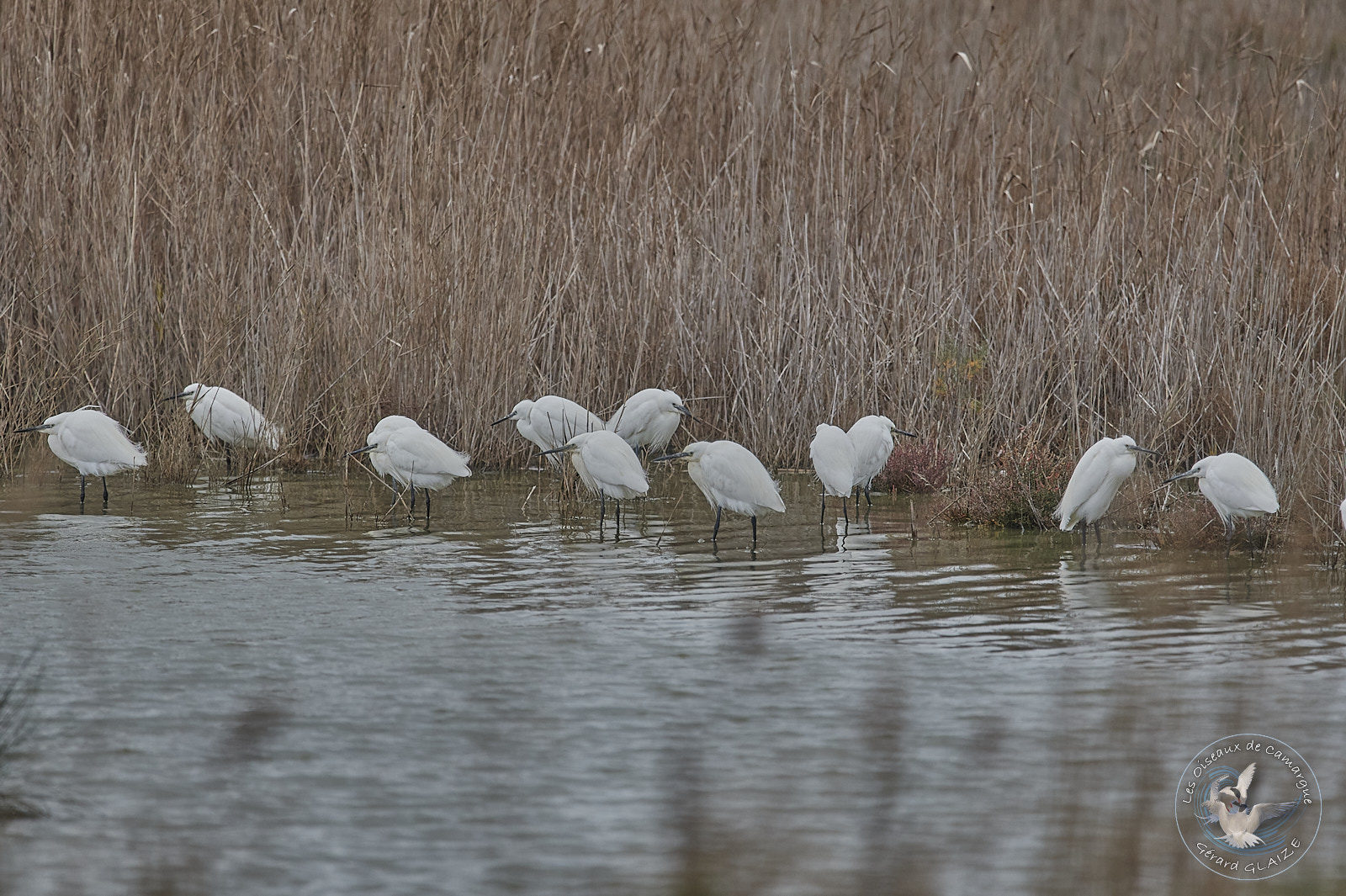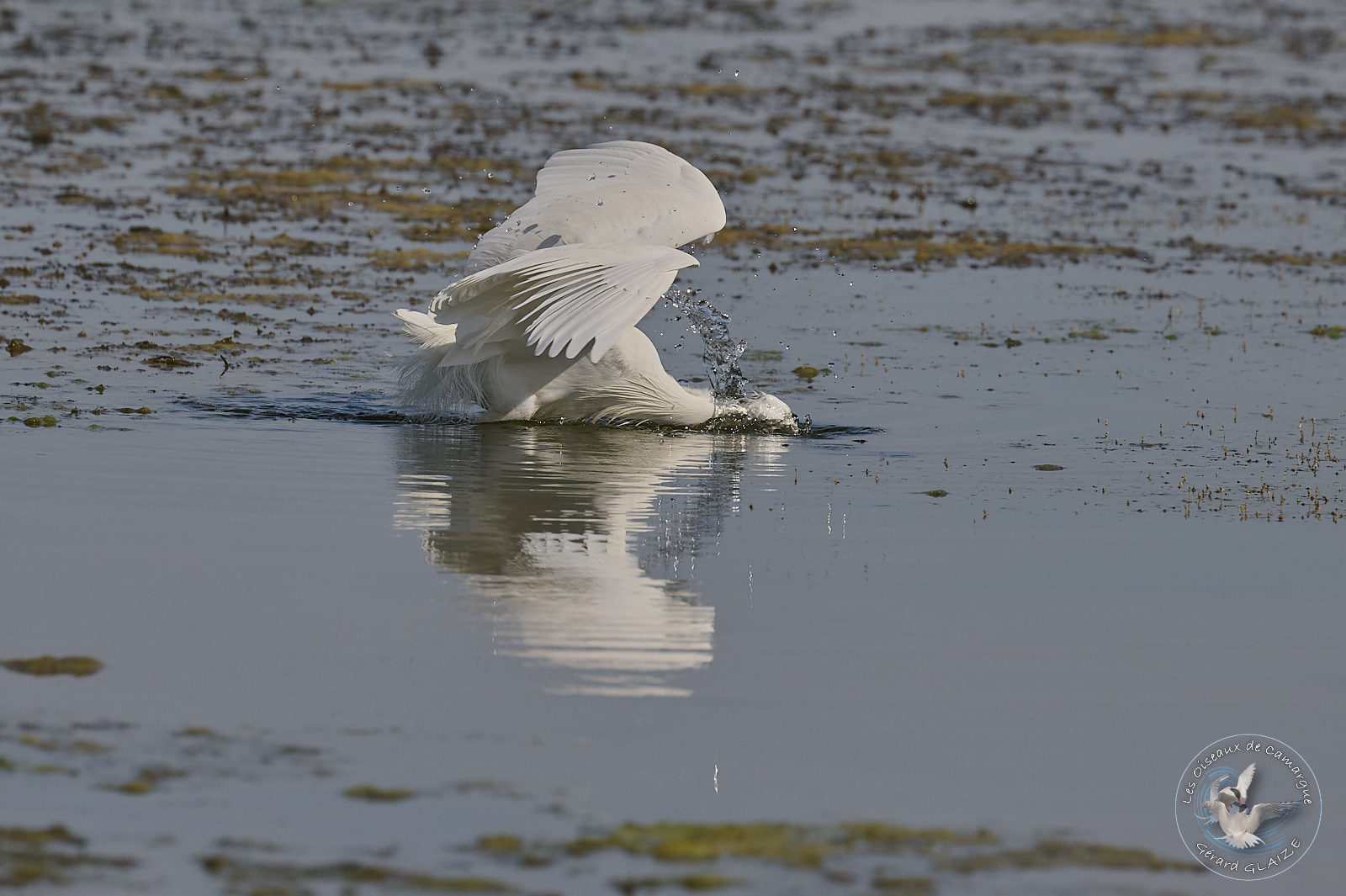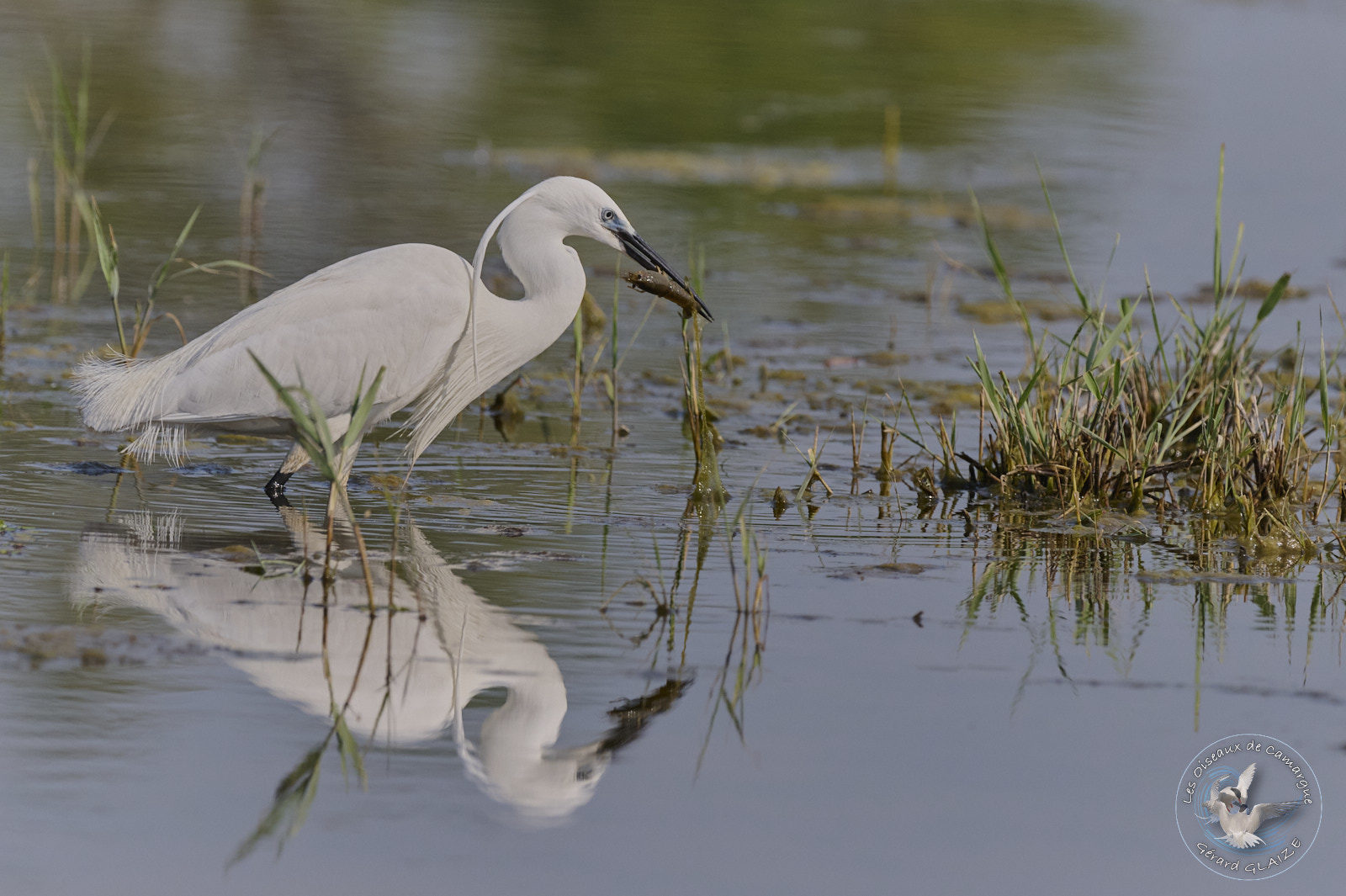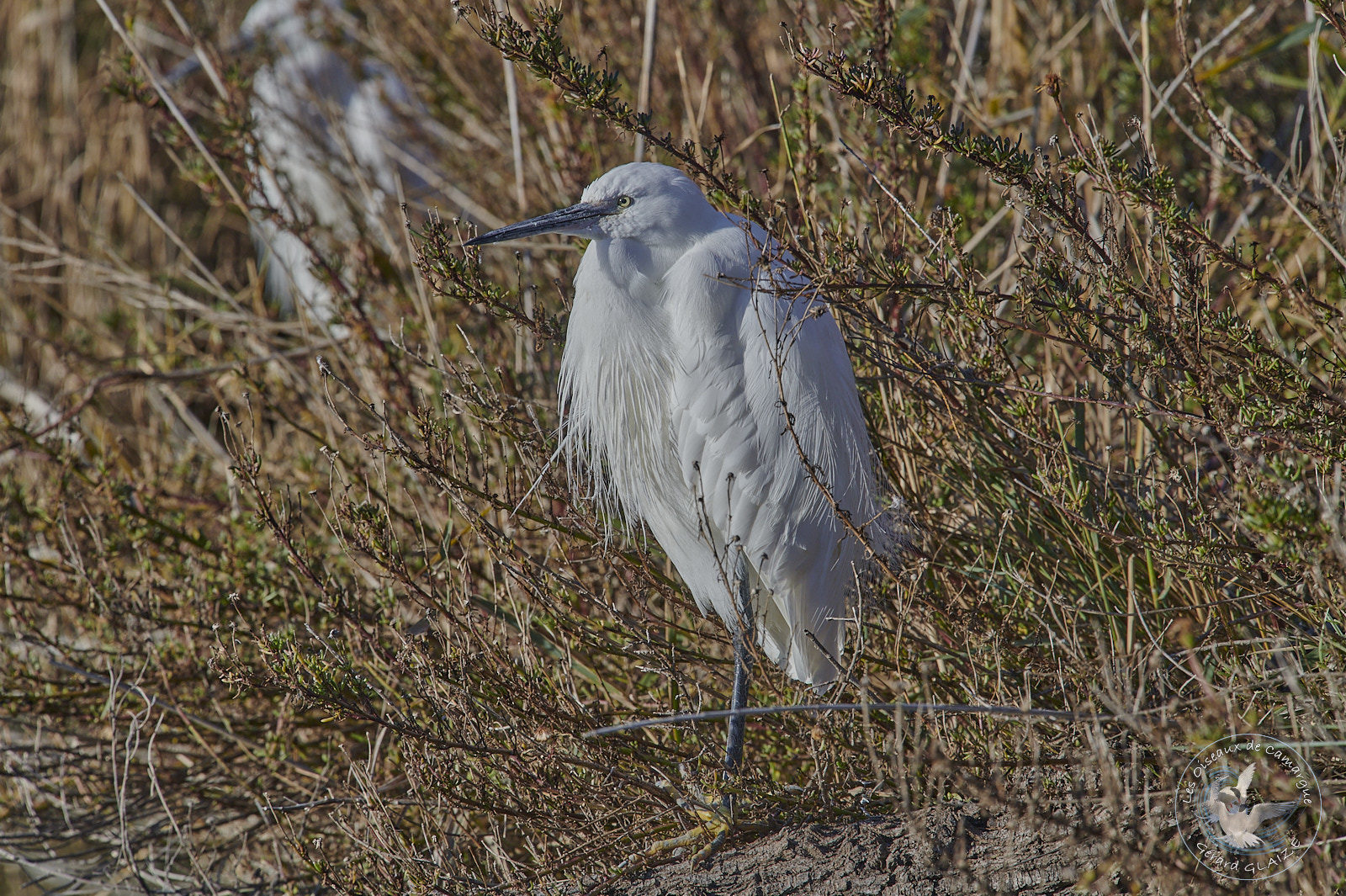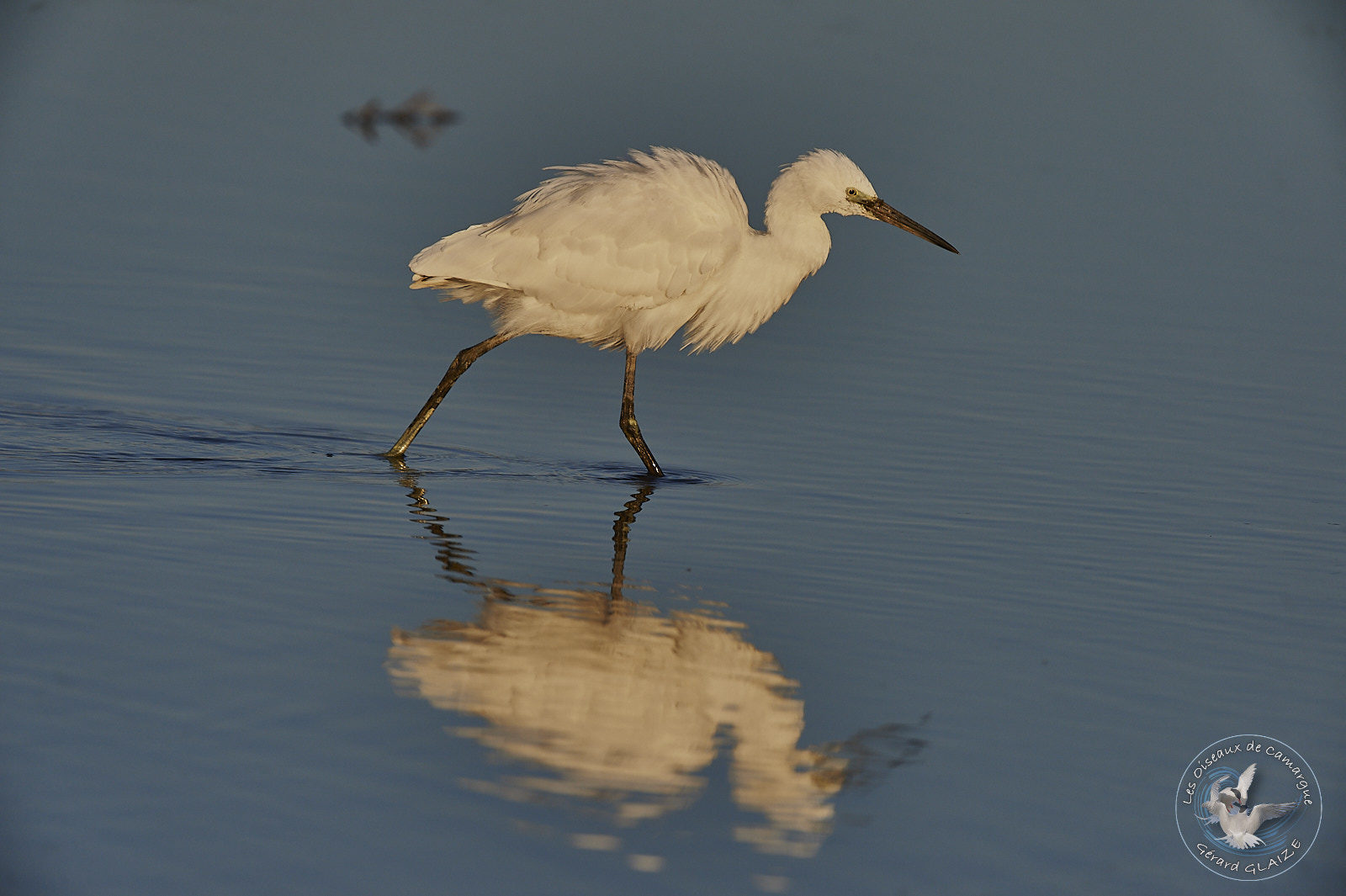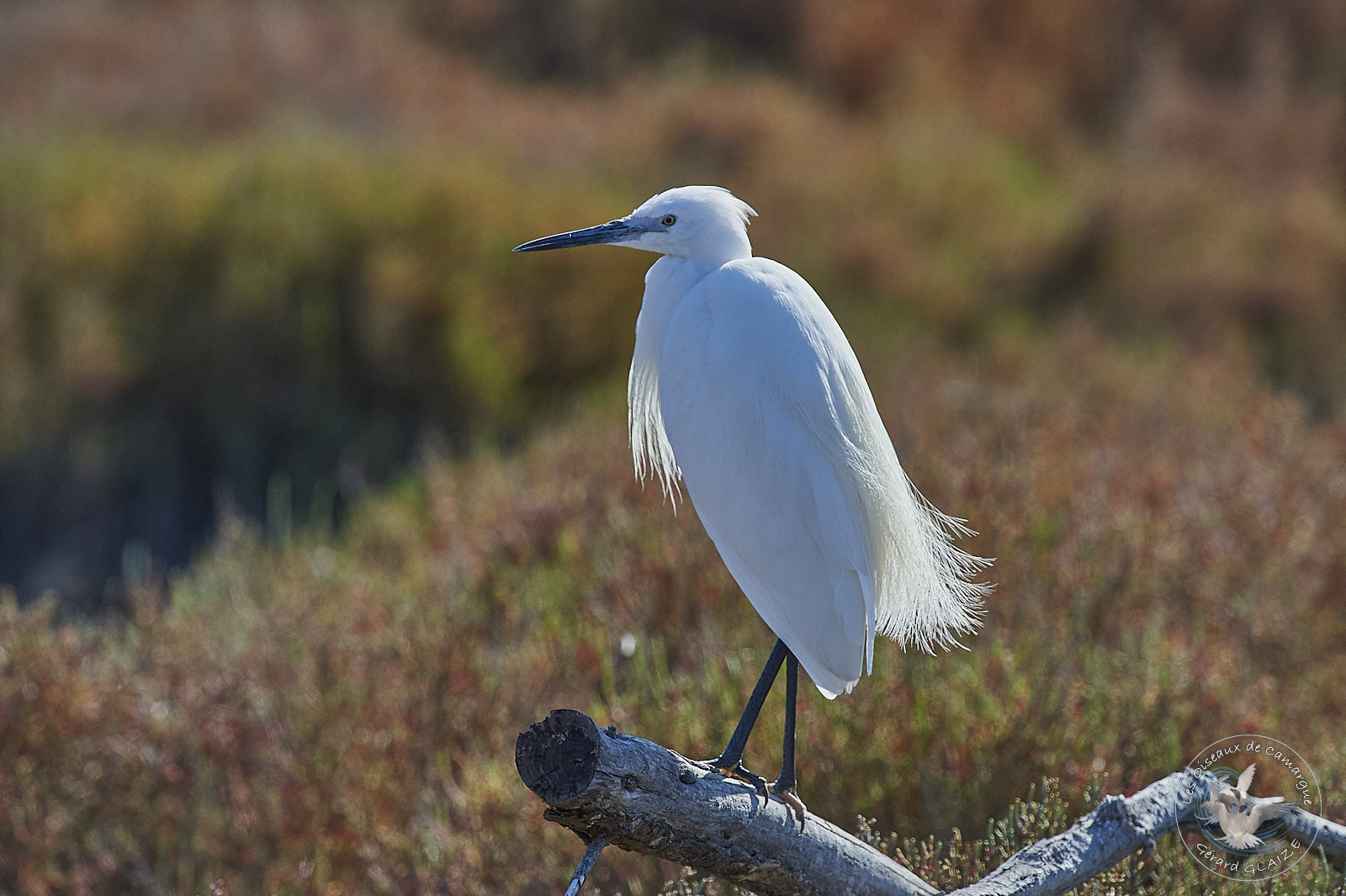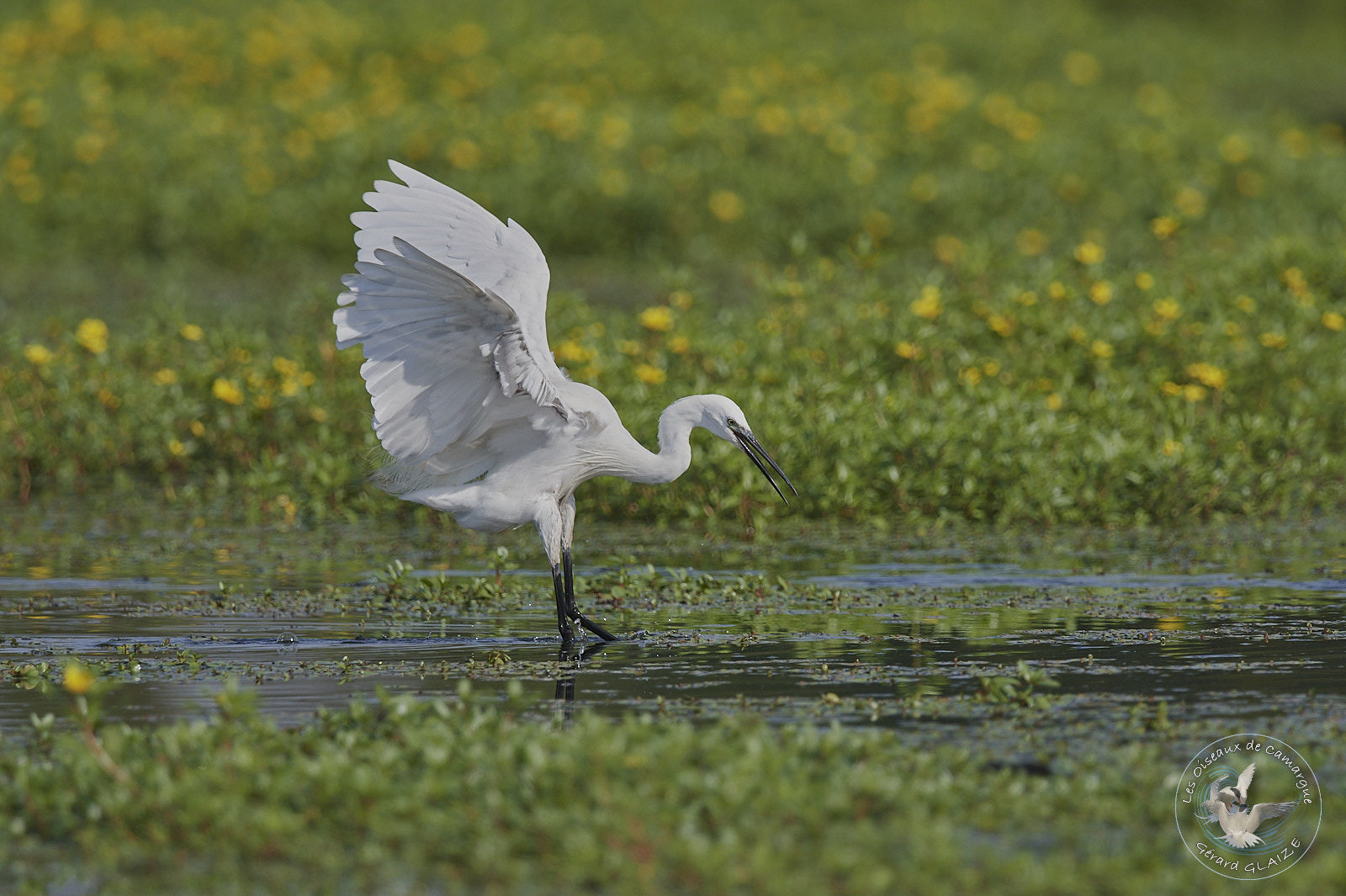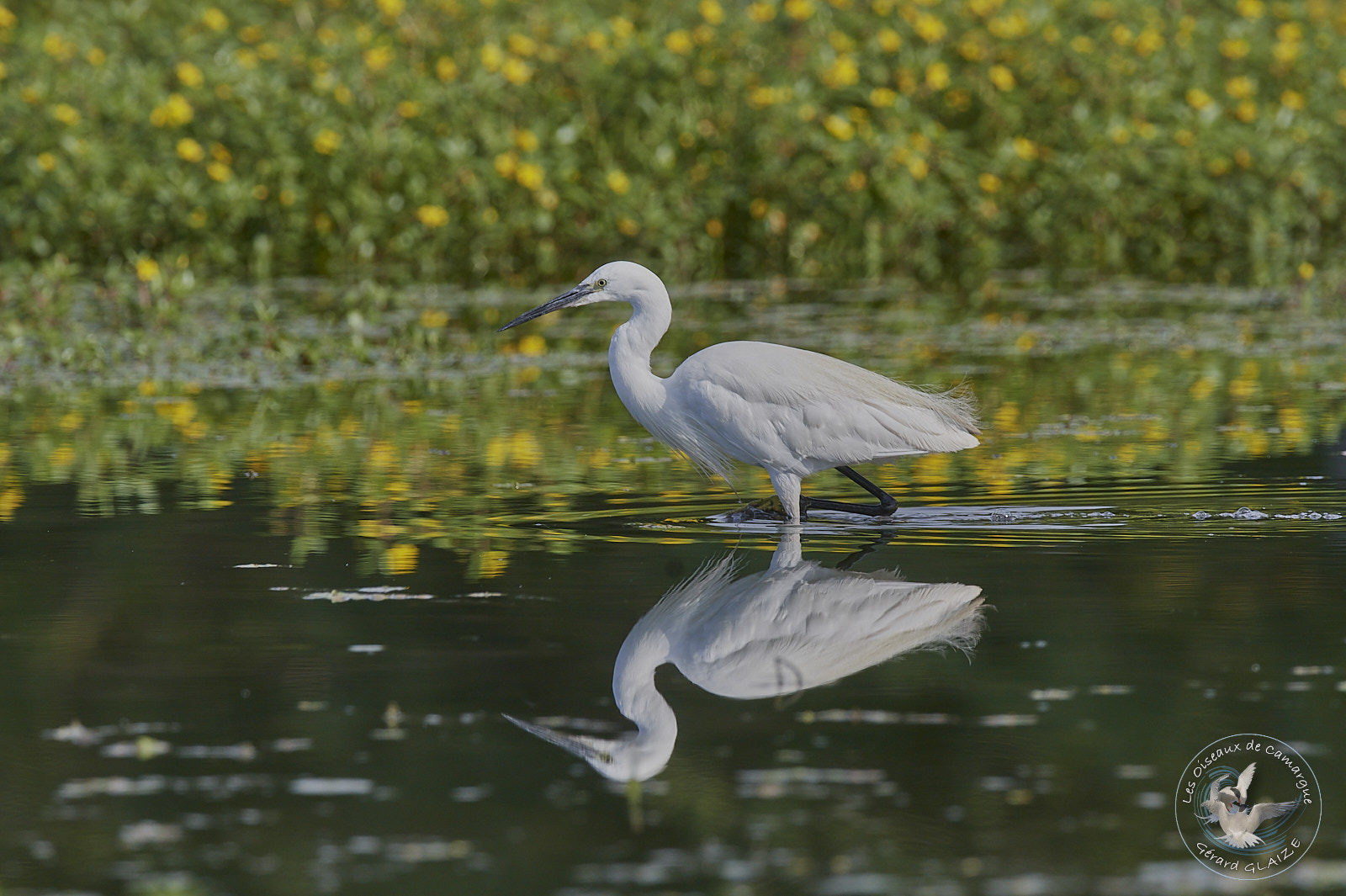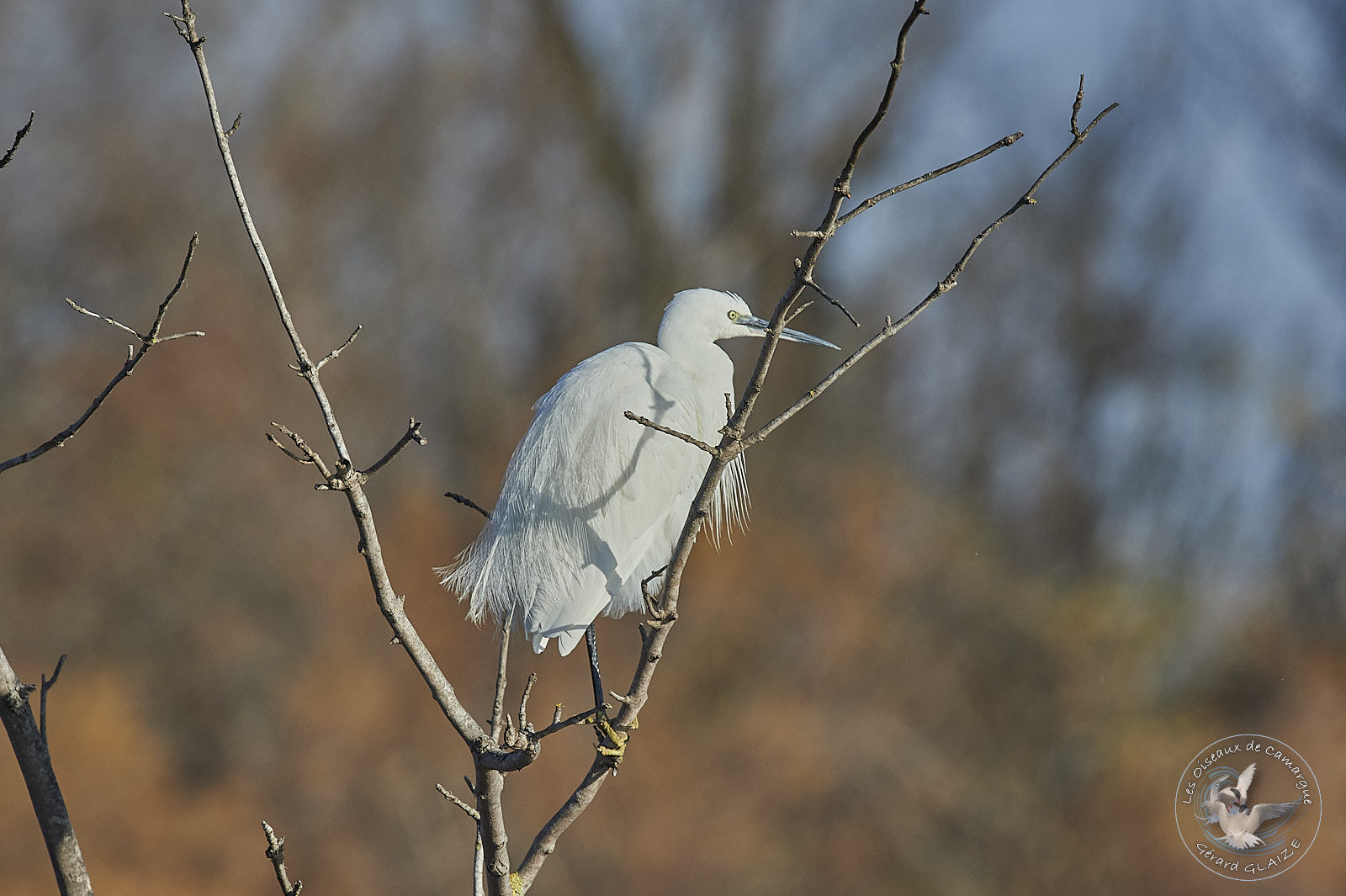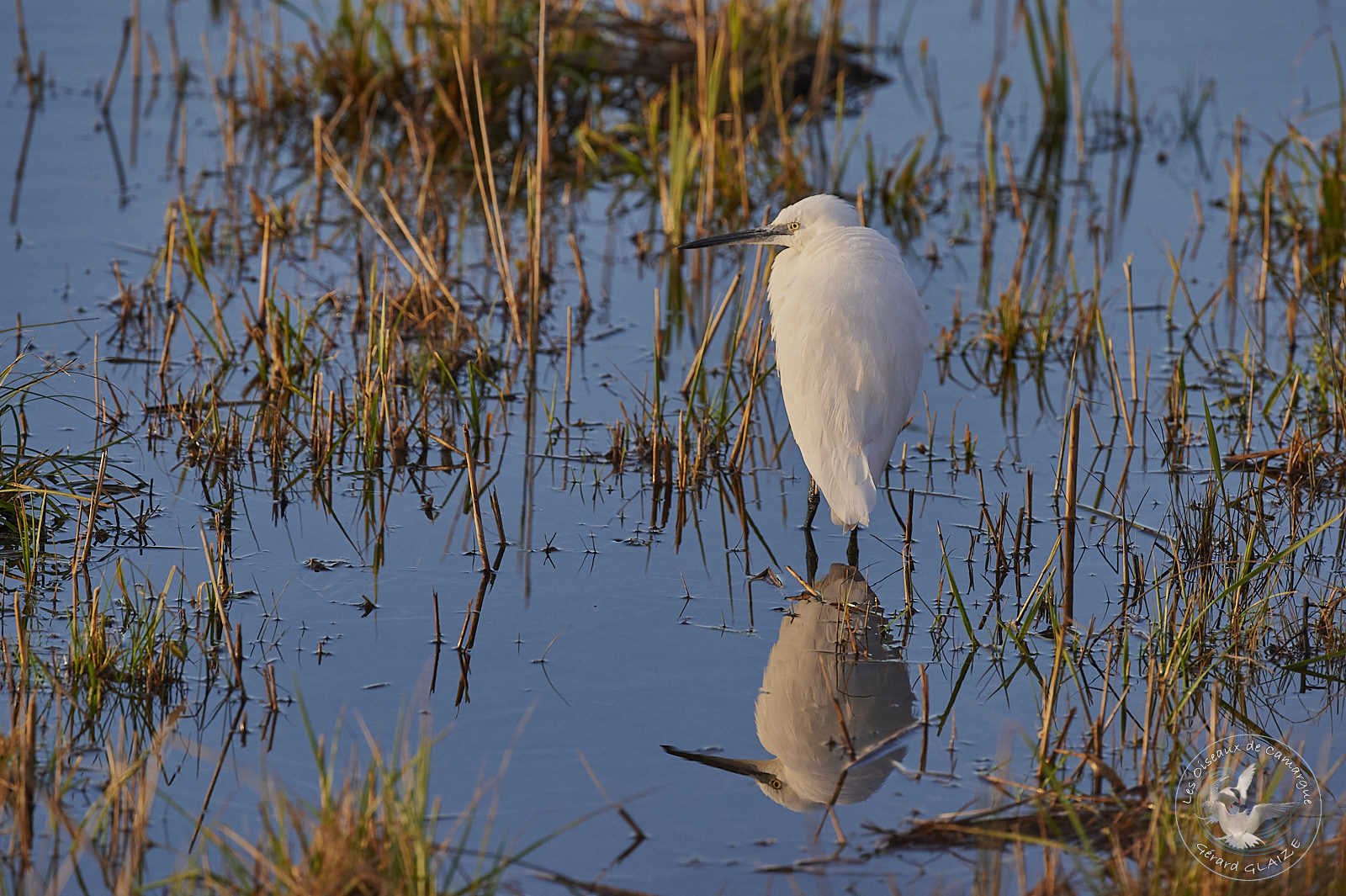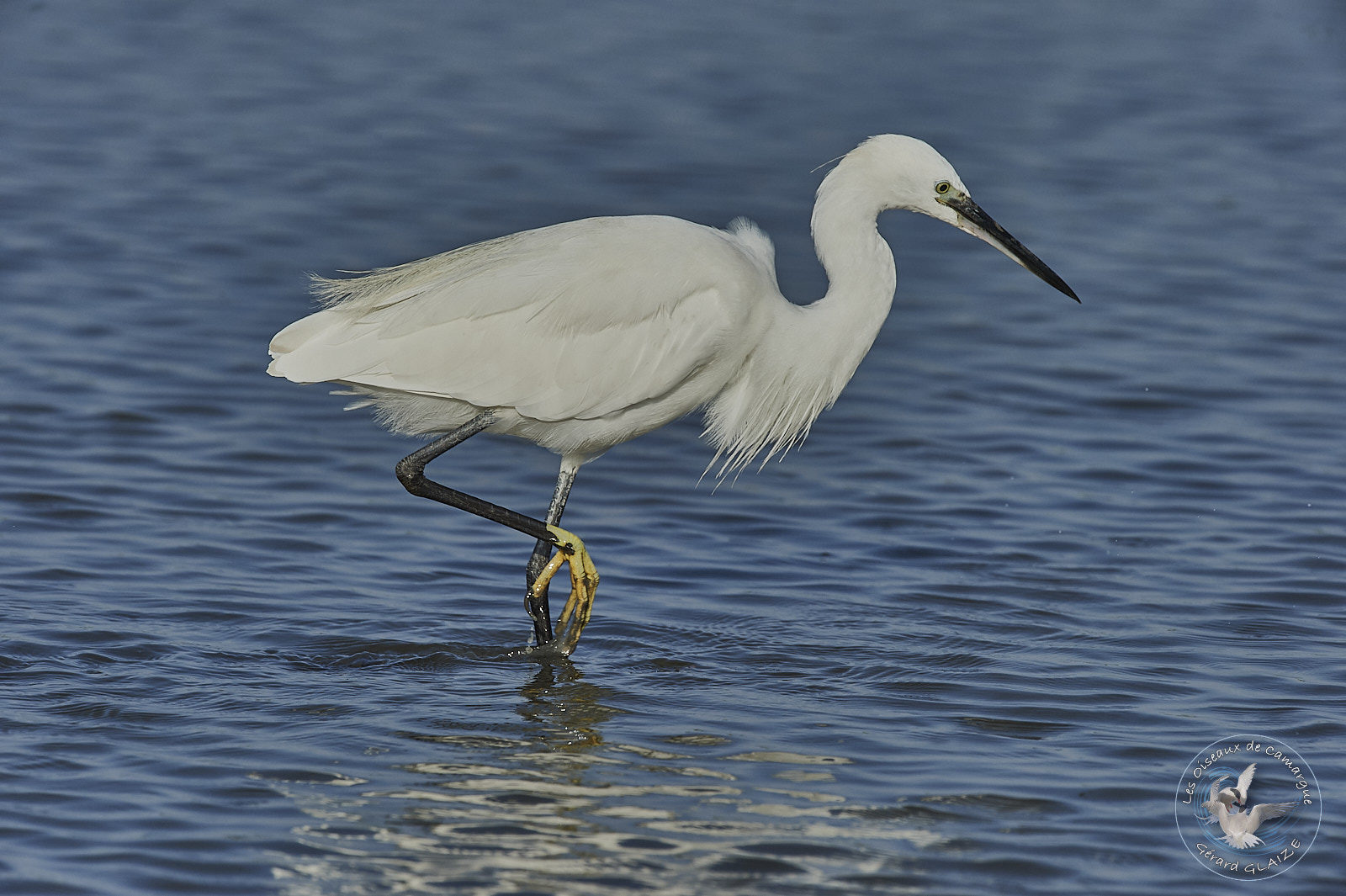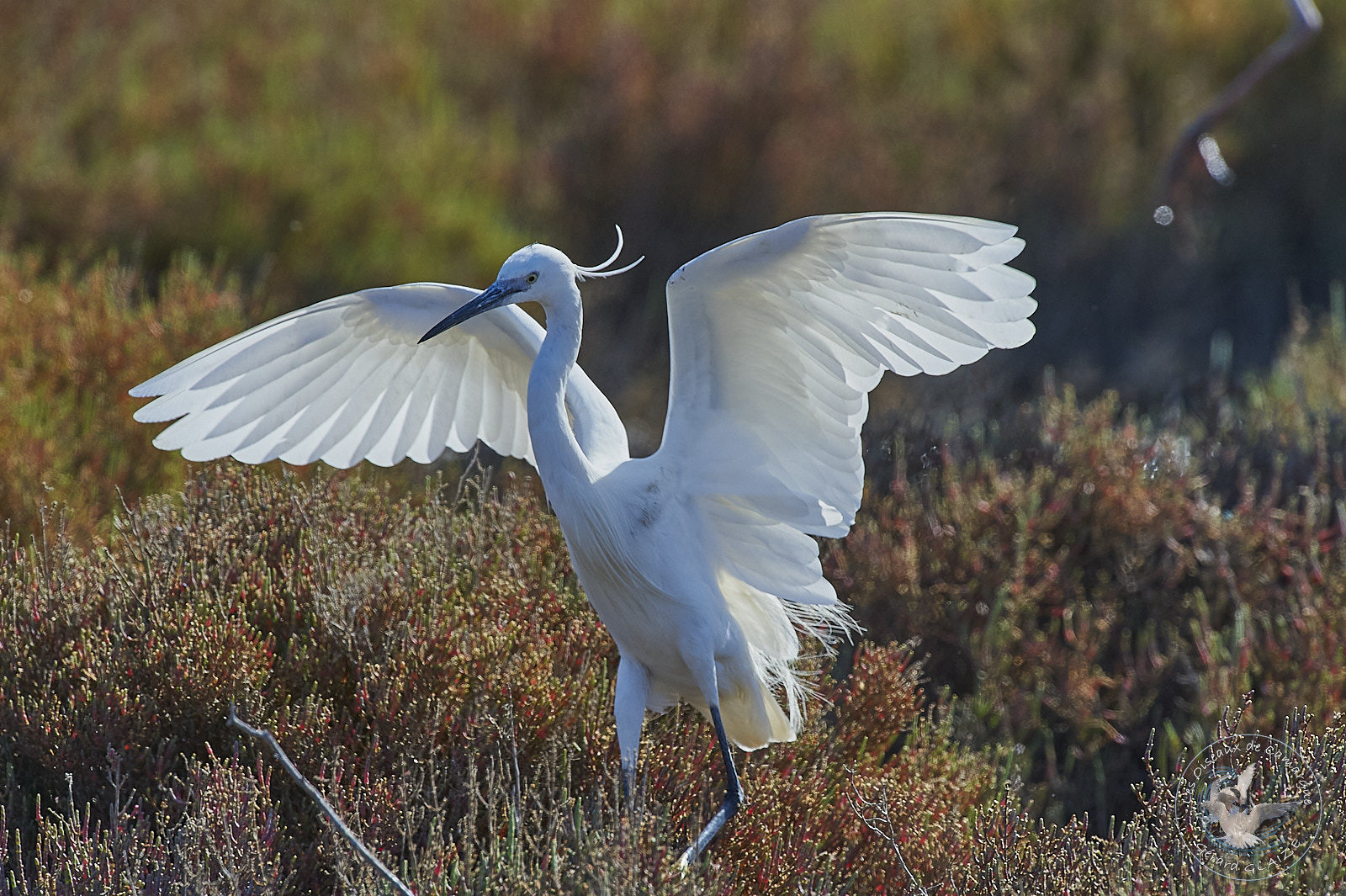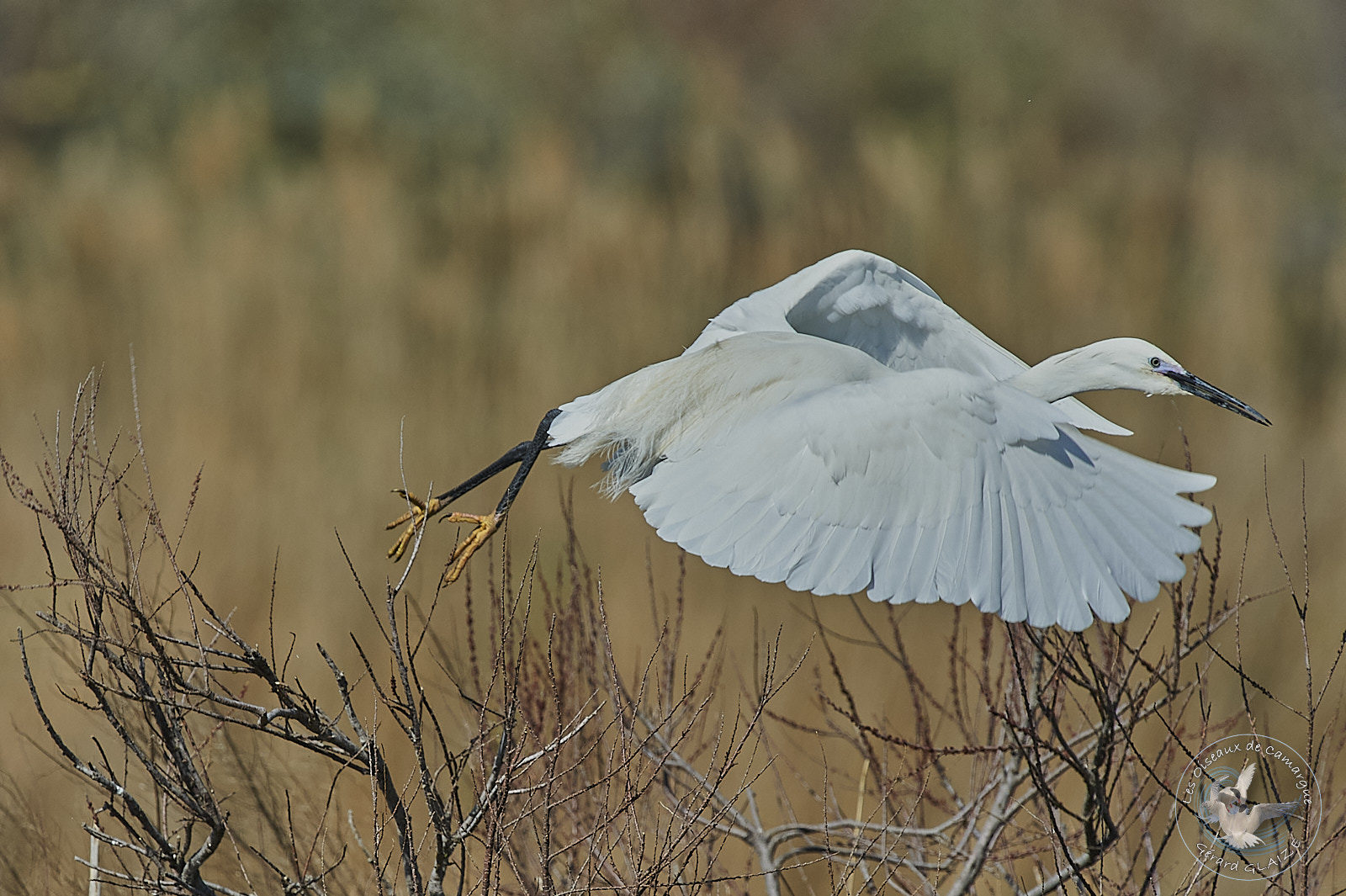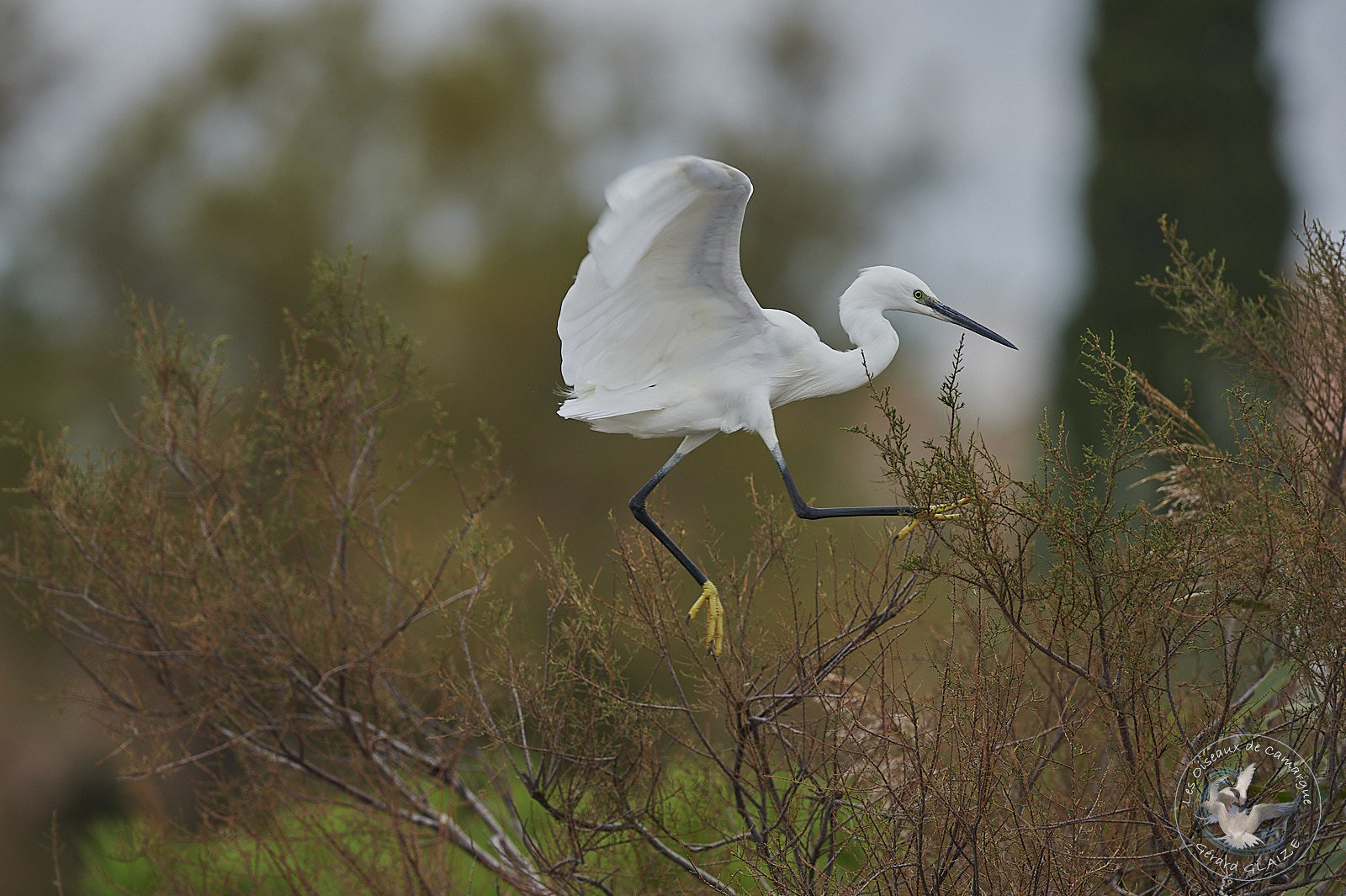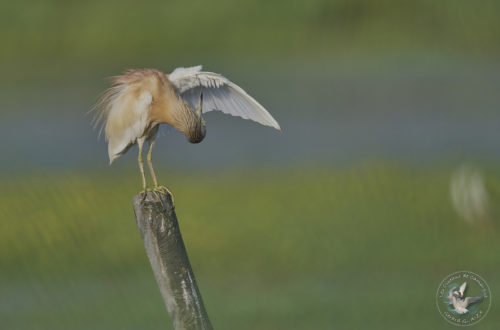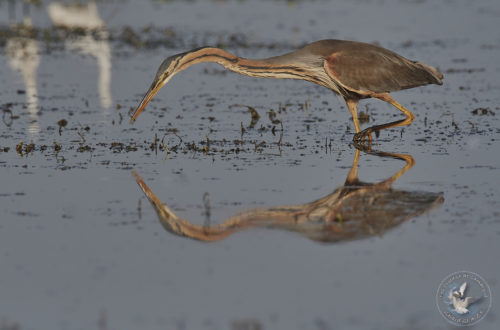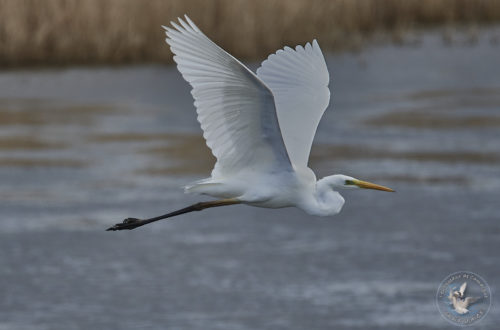Little Egret
Little egret is the most widespread of the egrets. It is recognized by its white plumage, its very elongated black beak, its black legs with yellow fingers. This Egret, smaller than the Great Egret, has two very long fine white ornamental feathers behind the crown, extending from the nape to the middle of the neck, and which play an important role during the courtship display.
This wading bird frequents a wide range of habitats.
Little Egret
Scientific name : Egretta garzetta
Family : Ardeidae
Length: from 55 cm to 65 cm – Wingspan: from 88 cm to 106 cm
Weight : from 500 gr to 638 gr
IUCN Conservation Status: LC
Flight
The egret has a powerful flight, it flies with slow wing beats, the neck retracted in the shoulders. The egret is a partial migrant, some colonies winter in Africa or in the south of France, in the Camargue in particular, where you can see it all year round.
Habitat
This Egret frequents many habitats, provided that there is the presence of open water, fresh or brackish, in which it finds its food. It likes the shallow waters of lagoons, estuaries, rice fields and other salt marshes. The presence of wooded areas suitable for its nesting is necessary.
Regime – Diet
Little Egret feeds by hunting in shallow water areas, small fish, frogs, worms, crustaceans, molluscs, and other insects.
Nesting
It nests in colonies with other Ardeidae species. Little Egret likes reedbeds, wet brushy areas or trees near water.
The pair builds the nest together, it is made of reeds and twigs. Laying, consisting of 3 to 5 greenish-blue eggs, takes place between the end of April and the beginning of May. The pair brood alternately for a period of 21 to 25 days. Parents feed the young for about forty days. Young Egret leave the nest to fly away after 5 weeks.
Protection
The common species is not globally threatened. Populations of this bird currently appear to be stable.
Cry
Little Egret is rather silent outside the colony, but we can hear a hoarse “kgarrk” or a long “aaahk” when taking flight.
Other Links
- You can see the article from my site “Birds of Camargue” for more information on the Camargue and the Birds.


